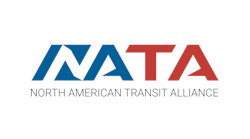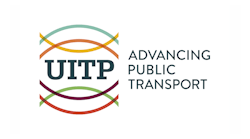Collaboration, transparency and respect for the expertise of involved parties should be the foundation of contractual agreements between transit authorities and contractors. A study released in April 2021 from the International Association of Public Transport (UITP) and commissioned by the North American Transit Alliance (NATA) states this is the only way both parties should approach the relationship if it is to reach its full potential.
The study, “Contracting in Transit the Value and Benefits of Private Contracting in North America and Internationally to Meet Passenger Needs,” interviews eight authorities (four in North America, four operating internationally) to highlight the benefits of using contracted transit operations.
UITP recognizes there are many ways to deliver daily services and contractual models are influenced by “context, culture and history of a location,” but all should strive to be win-win partnerships. Best practices presented in the study touch on the scope of the award process, contractual framework and partner relationships between the parties.
UITP Director of Strategy Sylvain Haon explains the association is not advocating for one model over another, but believes the study helps communicate what benefits are possible through use of third-party companies and, more importantly, how those benefits can be achieved.
Chairman of NATA and President of First Transit and First Vehicle Services Brad Thomas says NATA wanted the study to benefit transit authorities.
“We are passionate about the value that contracting brings to the market, but we really felt the need to challenge ourselves by commissioning this study to review how contracting public transportation works around the world from the perspective of those who hire contractors,” explained Thomas.
Procuring a Good Start
“We are talking about a complex procurement process and fairly complex contracts with public authorities and their counterparts. And the procurement process, to a certain extent, defines the terms of the contracts,” said Haon. “If you get that wrong, then the incentives around the allocation of risk is wrong and you don't build the partnership, which is another key element mentioned [in the study].”
Haon explains promoting a phase of dialogue during the procurement process can help provide insight on a contract’s various assessment criteria.
“This is critical because the quality of the answer, the quality of the contract and then, ultimately, the type of relationship you would have [can be defined], which is important because there's always something happening which you have not foreseen or defined,” Haon said.
“The transparency into the procurement process ensures proper alignment between the contractors' values and the public transit agency’s values and their common goals,” added NATA Member and Chief Operating Officer of National Express North America Matthew Wood.
That transparency and open dialogue will become more important as the global transit industry works to recover from the COVID-19 pandemic.
“The depth of the challenge may vary, but the challenge is the same all over the world,” said Haon. “Part of the answer requires flexibility - in the service and the business, but also in the governance of the contracting - because depending on the type of contract, the risk and the impact of the crisis as a consequence [could be] higher on the contractor or on the authority. We need to build in flexibility in this governance and contracting also to be able to respond to the circumstances.”
“I think we have an opportunity to rethink how we increase ridership in the post-pandemic world by meeting demands of both the underserved and the choice riders. We can redesign our transit networks to meet those different populations,” said Wood. “It’s good for the communities. It promotes economic opportunities and it's also a part of the solution for reducing congestion and environmental pollution. I think that's one of our main goals as public contractors and we believe that it's in alignment with our public transit agencies, as well.”
As the pandemic eases, Thomas believes no matter what Key Performance Indicators (KPIs) exist, recovery will come down to rider satisfaction.
“All other KPIs inform the customer experience. If we can thrill the rider, if we can excite the public to get on public transit, if the customer experience is so good that an individual won't think about taking their car and they will come to depend on the public transit system because they know that they are going to have a great experience, that’s the way we build ridership,” said Thomas.
He continued, “The whole industry is going to have to get more creative and I think they are going to have to find different ways to provide better service. The innovation that's happening in the industry, new technology, new modes for delivery of service, there is no better time for the public sector and the private sector to work together.”
Final Takeaways
Executive Director of NATA Paul Comfort hopes readers are left with three points after reviewing the study, “Contracting of public transportation services exists across the world with similarities between the models. There are numerous benefits to contracting, and they often lead to improved positive passenger experiences, improvement in KPIs and the ability for collaboration or innovative services. And third, as evidenced by the study, the passengers and transit authorities benefit the most from a relationship built on collaboration, transparency and communication.”
Haon added, “UITP wanted to raise awareness about the benefits of contracting for those who do it and if you do it properly, you have to really think about the whole process, about the whole system and see the contractors as your partners.”
The full study is available for download on the UITP website.






